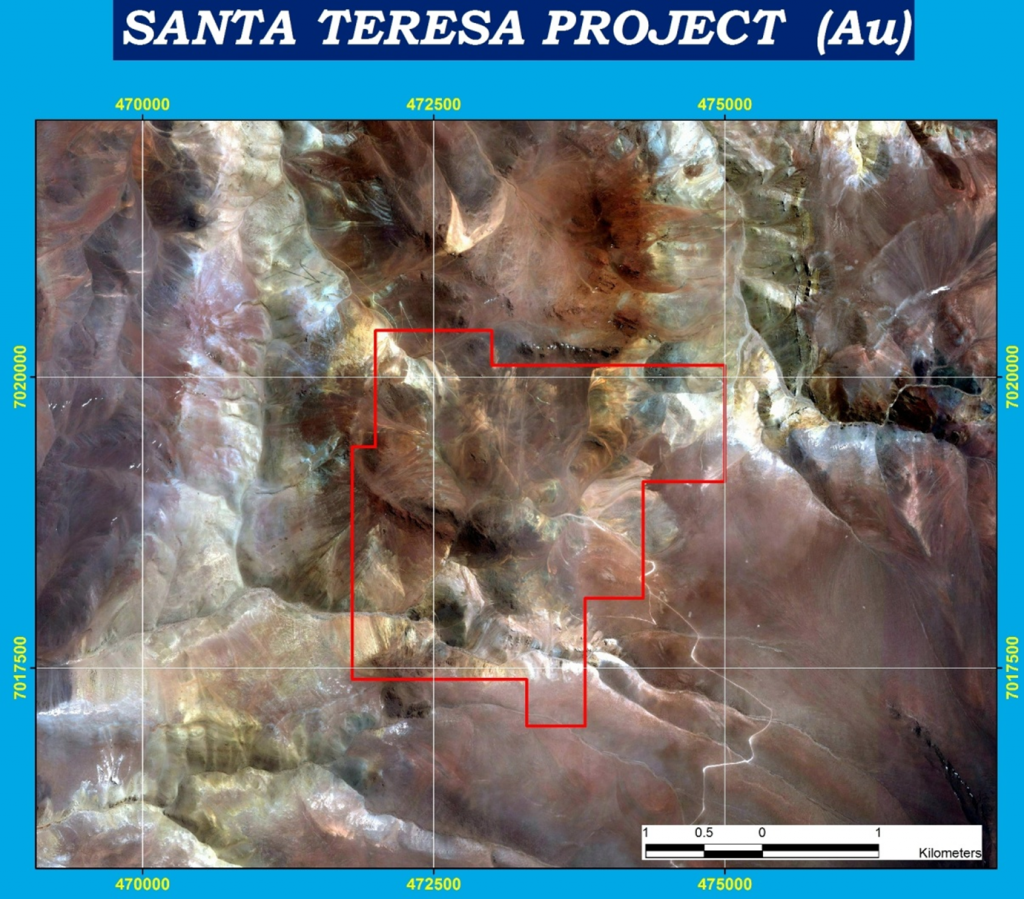Santa Teresa
The SANTA TERESA gold prospect is located 12 km south of the La Coipa Au-Ag mine from Kinross and 6 km north of the Fénix gold deposit (former Cerro Maricunga) of Rio2.
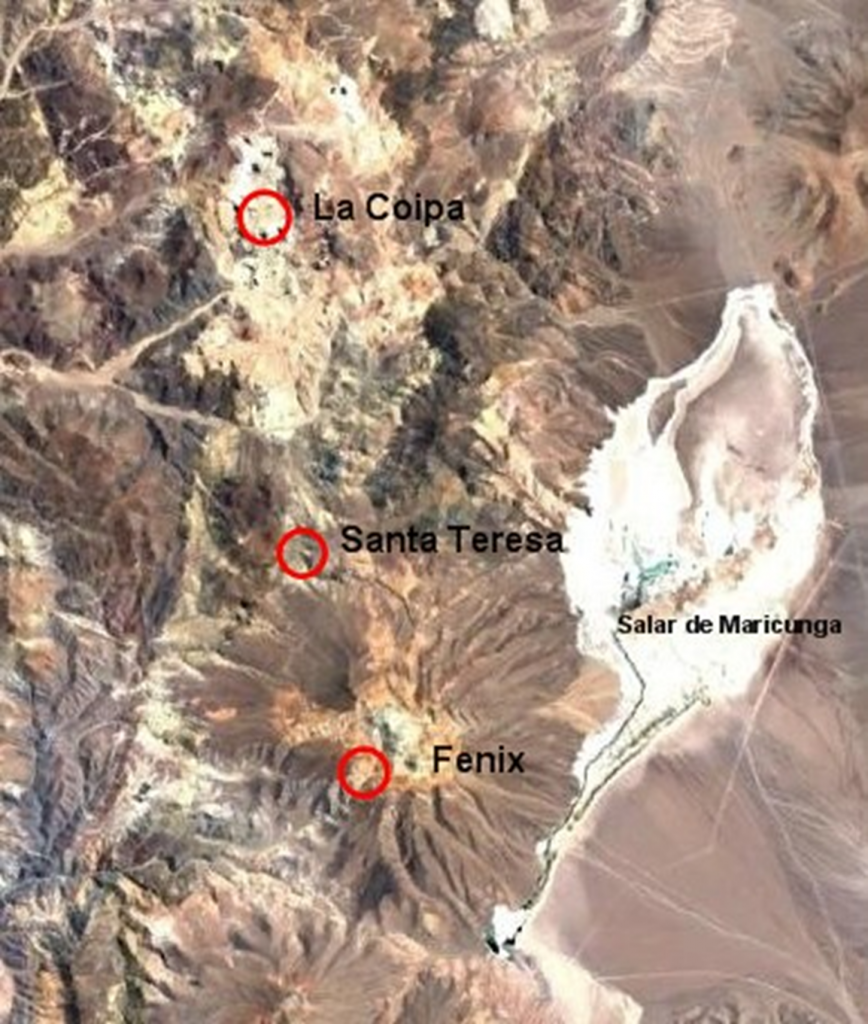
It is a low sulfidization prospect, with adularia, it does not present a conspicuous hydrothermal alteration. Its exploration has been done looking for gold mineralization associated with lutitic sediments as in the La Coipa and Can Can mines and Au-Cu porphyry as in the Fénix deposit

The geological context is constituted by a basement of Mesozoic sedimentary and volcanic rocks intruded by plutons and dykes of different types and ages, folded along NW structures. These rocks form the basement of the Miocene volcanism to which the Maricunga style of Au-Ag-Cu mineralization is associated
Geochemistry (soil and rock profiles) indicates the presence of gold anomalies of 0.1 to 0.6 g/t Au and copper and molybdenum in much of the property, corresponding mainly to quartz and quartz-magnetite-(chlorite). The geology shows dacitic-monzonitic intrusive events of the early Miocene that would be responsible for this mineralization.
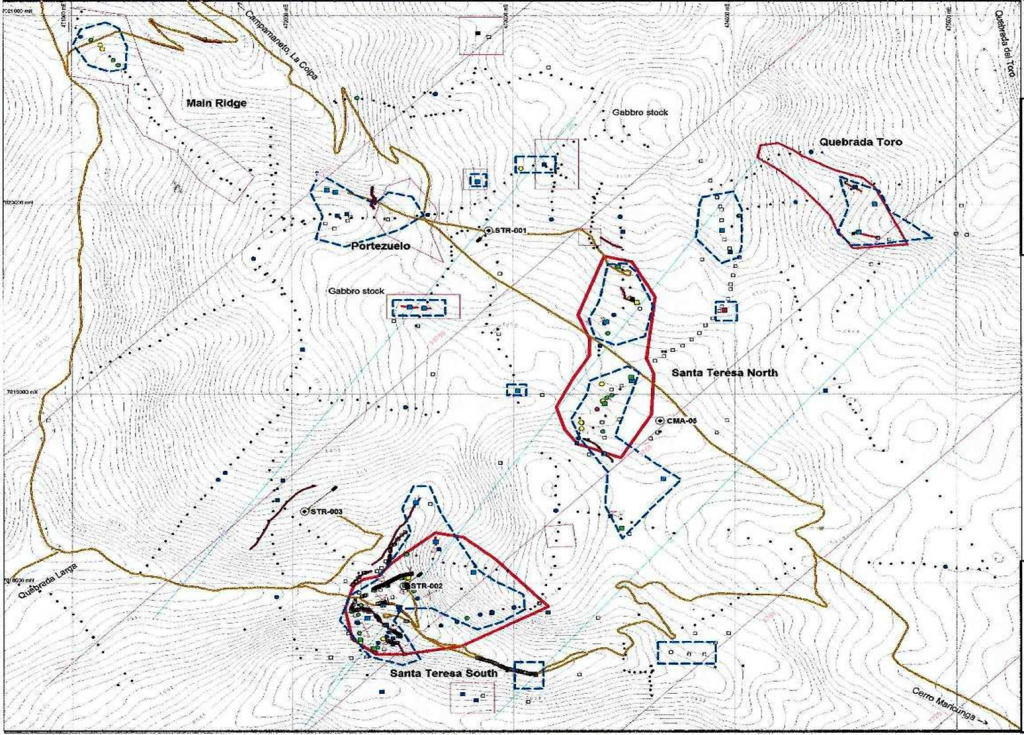

Geochemical anomalies map of Gold (red) and Molybdenum (blue
Veins and veinlets mineralization has been identified in significant areas with a diameter greater than 400 m, which form the two main geochemical-geological targets hosted in a NE strip of 3 km in length and 1 km in width.
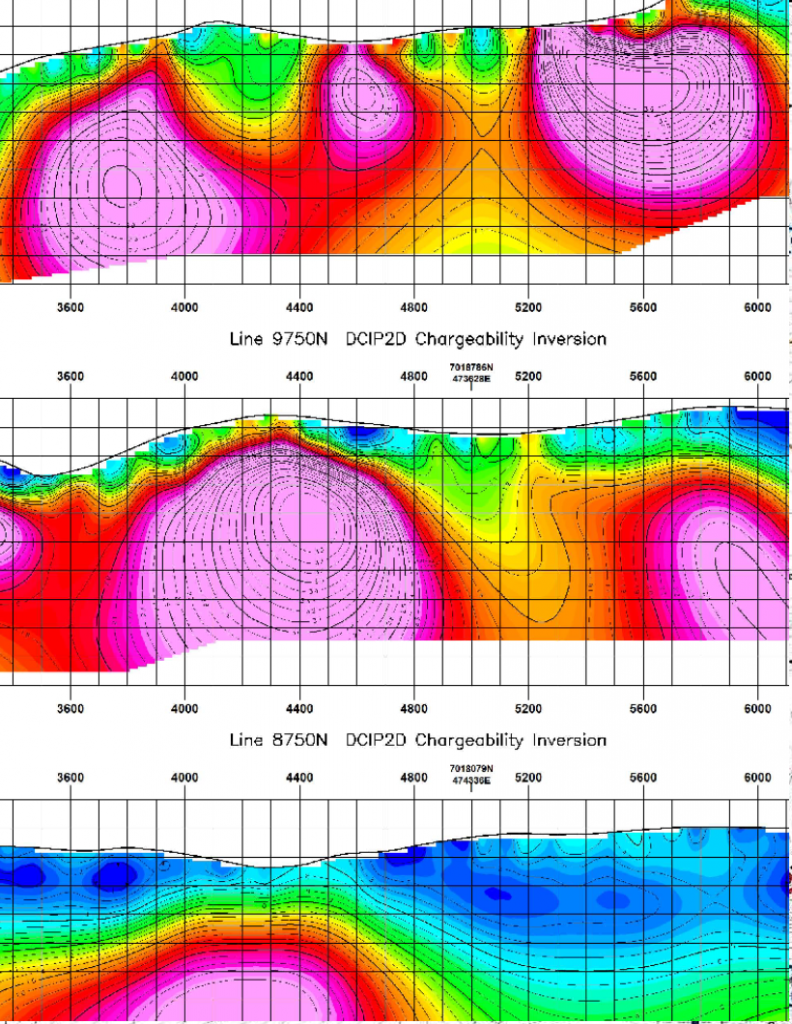
Ground Magnetometry
Seven IP-Resistivity lines and a detailed terrestrial magnetometry were performed, showing exploration targets attributed to upward filtration from one or more deeper mineralized bodies that do not crop out. SANTA TERESA is associated with an extensive magnetic low of about 4 km in diameter. IP chargeability shows strong anomalies in an area of 3 km in diameter
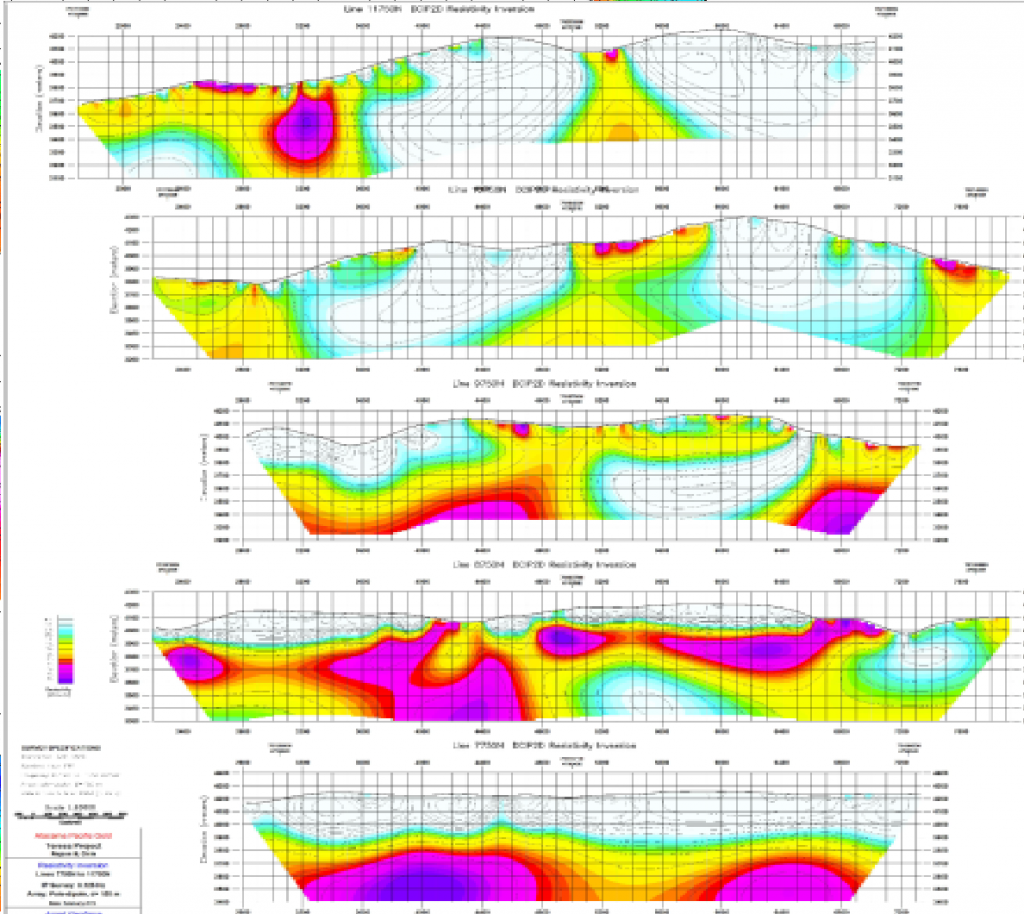

Three RC holes were made towards the deep geophysical target. Problems of abundant groundwater and fault zones prevented them from reaching the desired depth and the results are inconclusive.
EXPECTATIONS
Santa Teresa shows numerous signs of Au, Ag and Cu mineralization: high grade veins, veinlets and stockworks with anomalous values, a complex intrusive system with stocks of gabbros, diorites and various types of porphyries. In addition to strong anomalies of magnetism, IP chargeability and resistivity. This would support the hypothesis of deep mineralization.
Therefore, the need to perform deep drillings on the chargeability and high resistivity anomalies is raised.
It is proposed to carry out 7 drillings of 500 meters each, on geochemical and geophysical anomalies.
The mining project is covered by 741 Ha of exploitation concessions

